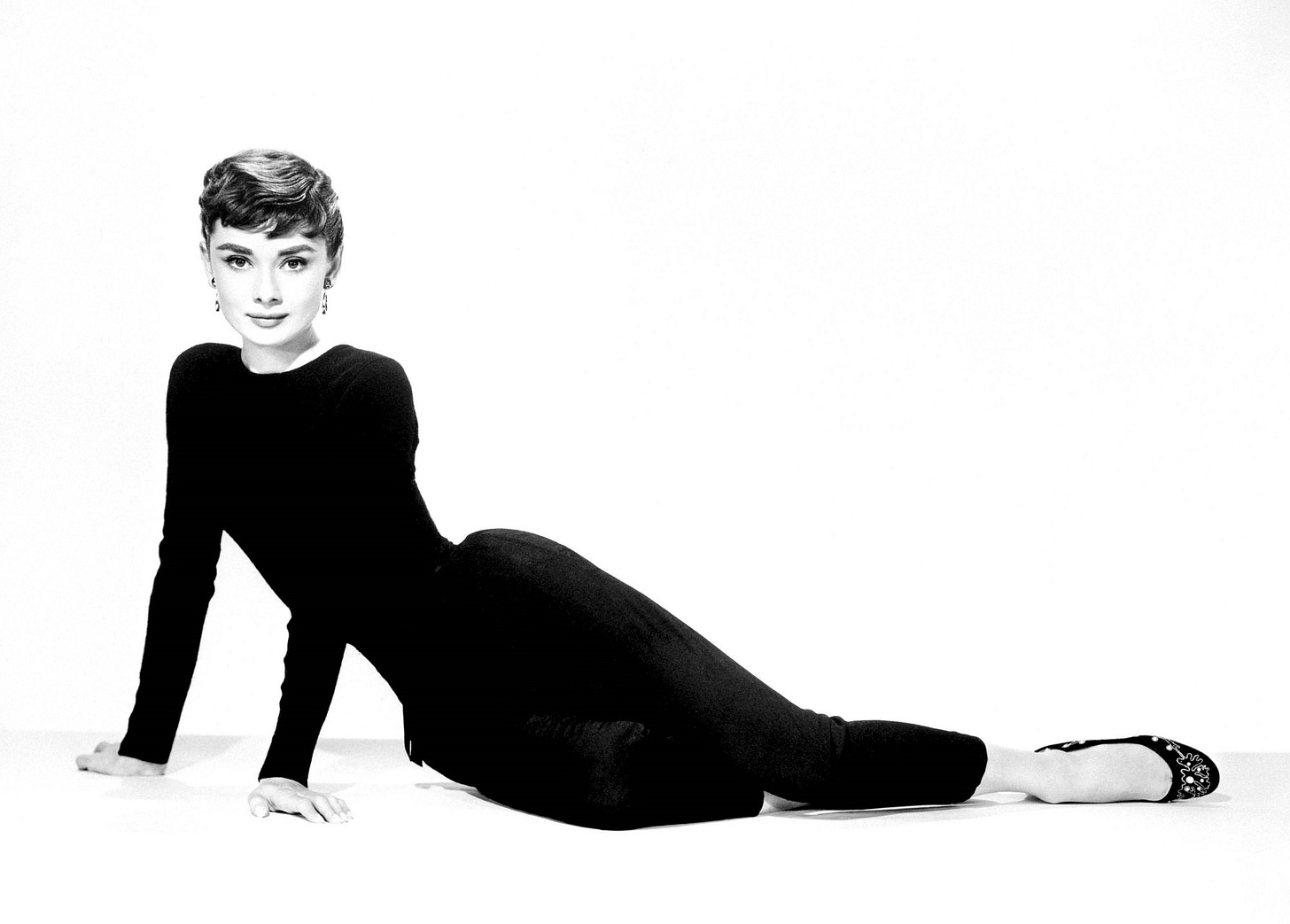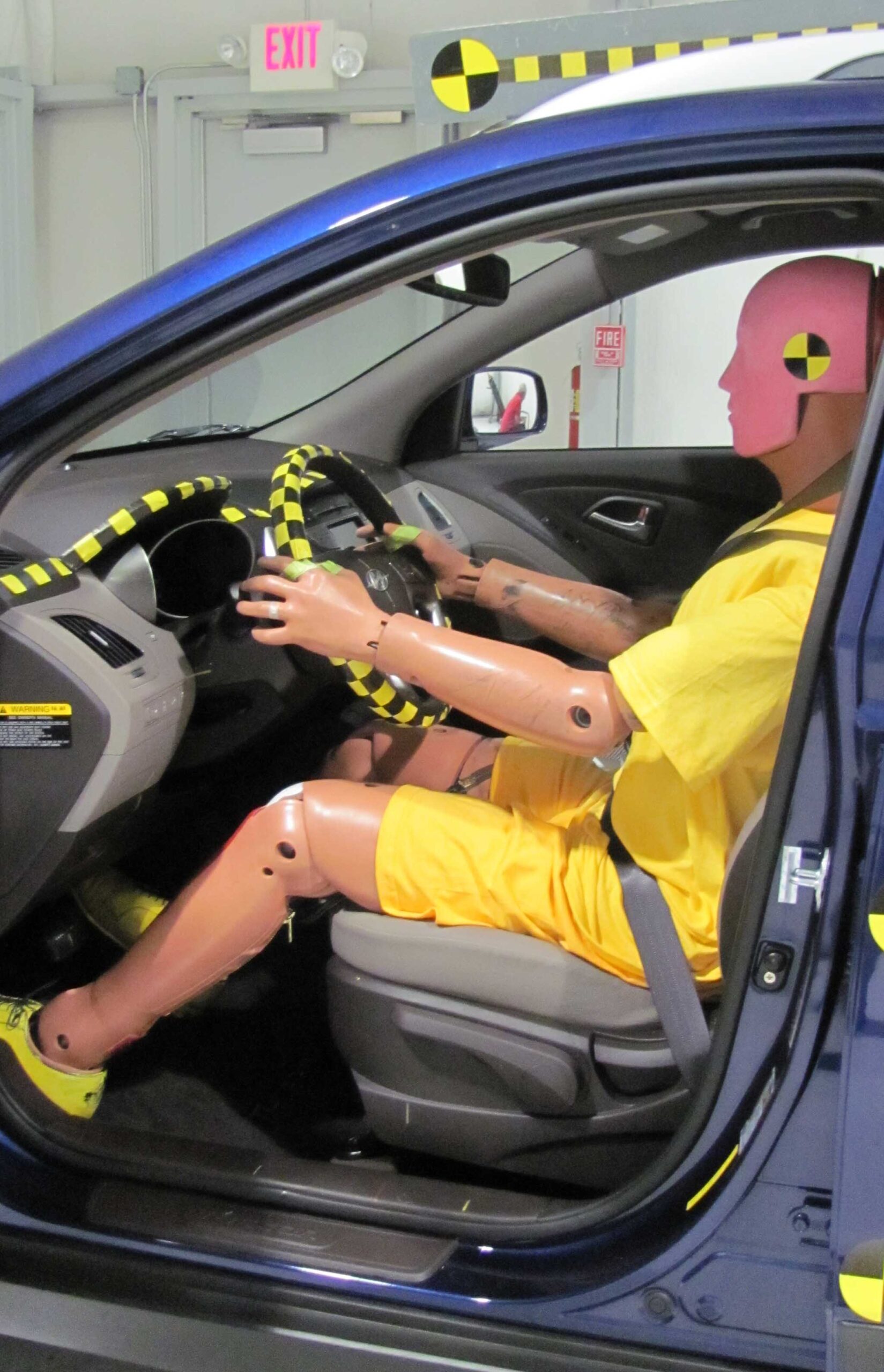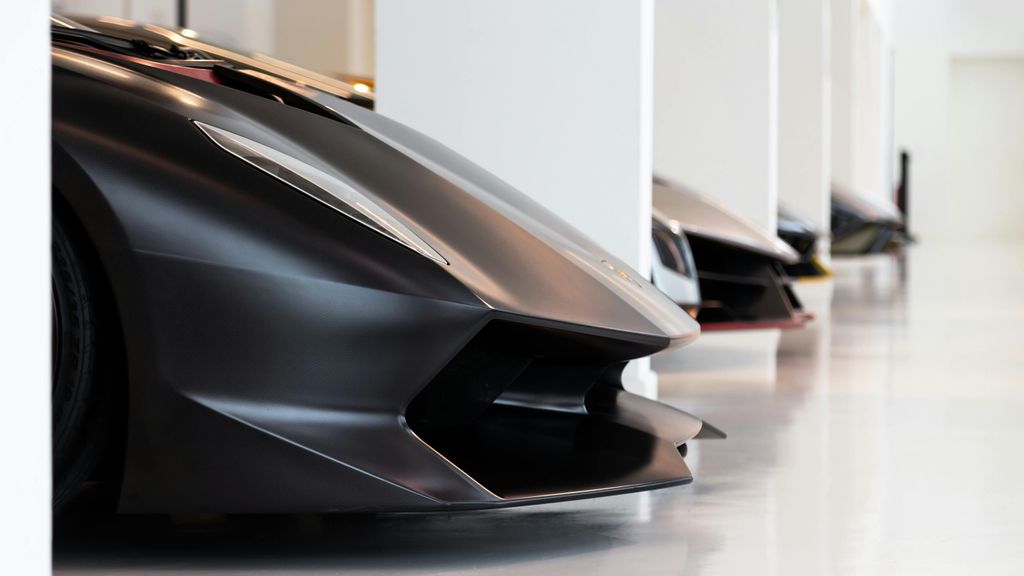
Sports cars. The very phrase conjures images of screaming engines, asphalt-shredding acceleration, and a driving experience that sets your pulse racing. We expect pure, unadulterated speed, and handling so sharp it could slice a diamond. That’s the dream, right? The visceral thrill of pushing a machine to its limits, feeling every G-force, hearing that glorious exhaust note—it’s what makes us car fanatics tick. But what happens when that dream hits a wall, or gets passed by a Toyota Sienna at the stoplight?
Because, let’s be honest, not every vehicle that looks like it belongs on a racetrack actually performs like one. The automotive landscape has been littered with cars boasting aggressive styling and “sporty” branding that, when push came to shove, couldn’t outrun a determined jogger. Whether due to a baffling engine choice, regulatory red tape, or questionable engineering, these machines simply fell short of the fundamental expectation: to be *fast*. Let’s take a sobering look at some of the most gloriously slow sports cars ever conceived.
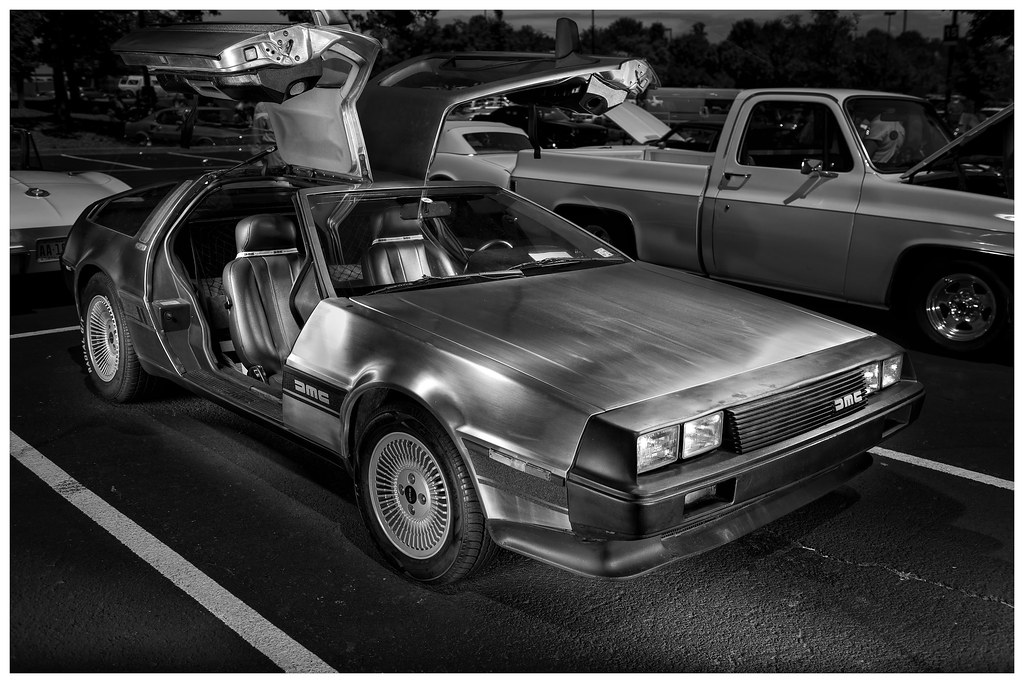
1. **DeLorean**Ah, the DeLorean. Instantly recognizable, eternally iconic, and forever etched into our collective consciousness thanks to a certain time-traveling movie. If you’ve ever watched *Back to the Future* and thought that the dramatic buildup to getting Doc Brown’s DeLorean time machine to the crucial 88 mph was just Hollywood exaggeration, well, you, my friend, might want to hear just how embarrassingly slow the DeLorean actually was in real life. It’s a classic case of cinematic magic vastly outperforming automotive reality.
The story behind the DeLorean’s powerplant is a tragic comedy of errors. Originally, it was meant to feature a high-revving Wankel rotary engine, then a Ford V6, both plans scrapped. DeLorean pivoted to a Citroën V6, found it lacked power, and an attempt to turbocharge it was abandoned. This led to settling for a lackluster V6 developed through a joint effort by Peugeot, Renault, and Volvo. This “PRV” engine was a diplomatic compromise that delivered anything but a thrilling driving experience.
The 2.8-liter PRV V6 produced a measly 130 bhp. To make matters worse, it wouldn’t fit in the originally designed mid-engine bay, forcing a redesign to the rear. The DeLorean’s sluggish 10.5-second 0–60 mph time meant that even rivers would doze off before reaching a curve, let alone breaking through the space-time continuum. It was a car that looked like it was going 88 mph standing still, but in reality, it was barely doing 30.
Car Model Information: 1981 Delorean DMC-12
Name: DMC DeLorean
Alt: 1983 DeLorean
Caption: 1983 DeLorean
Manufacturer: DeLorean Motor Company
Production: January 21, 1981 – December 1982
ModelYears: 1981–1983
Assembly: Dunmurry
Designer: Giorgetto Giugiaro
Class: Sports car
BodyStyle: coupé
Layout: Rear-engine, rear-wheel-drive layout
Doors: Gull-wing doors
Engine: 2.85 L
Abbr: on
Powerout: 130 hp
Transmission: 5-speed manual ,3-speed automatic
Wheelbase: 2413 mm
Length: 4267 mm
Width: 1988 mm
Height: 1140 mm
Weight: 1233 kg
Sp: us
Categories: 1980s cars, All Wikipedia articles written in American English, Articles with short description, Automobiles with backbone chassis, Automobiles with gull-wing doors
Summary: The DMC DeLorean is a rear-engine, two-seat sports car manufactured and marketed by John DeLorean’s DeLorean Motor Company (DMC) for the American market from 1981 until 1983—ultimately the only car brought to market by the fledgling company. The DeLorean is sometimes referred to by its internal DMC pre-production designation, DMC-12, although this was not used in sales or marketing materials for the production model.
Designed by Giorgetto Giugiaro, the DeLorean is noted for its gull-wing doors and brushed stainless-steel outer body panels, as well as its lack of power and performance. Though its production was short-lived, the DeLorean became widely known after it was featured as the time machine in the Back to the Future films.
With the first production car completed on January 21, 1981, the design incorporated numerous minor revisions to the hood, wheels and interior before production ended in late December 1982, shortly after DMC filed for bankruptcy and after total production reached an estimated 9,000 units.
Despite the car having a reputation for poor build quality and an unsatisfactory driving experience, the DeLorean continues to have a strong following, driven in part by the popularity of Back to the Future. 6,500 DeLoreans were estimated to still be on the road as of 2015.
Get more information about: DMC DeLorean
Buying a high-performing used car >>>
Brand: DeLorean Model: DeLorean
Price: $37,500 Mileage: 0 mi.
Read more about: 13 Iconic 1980s Classics: Unearthing Automotive Treasures Whose Values Are Soaring for Collectors
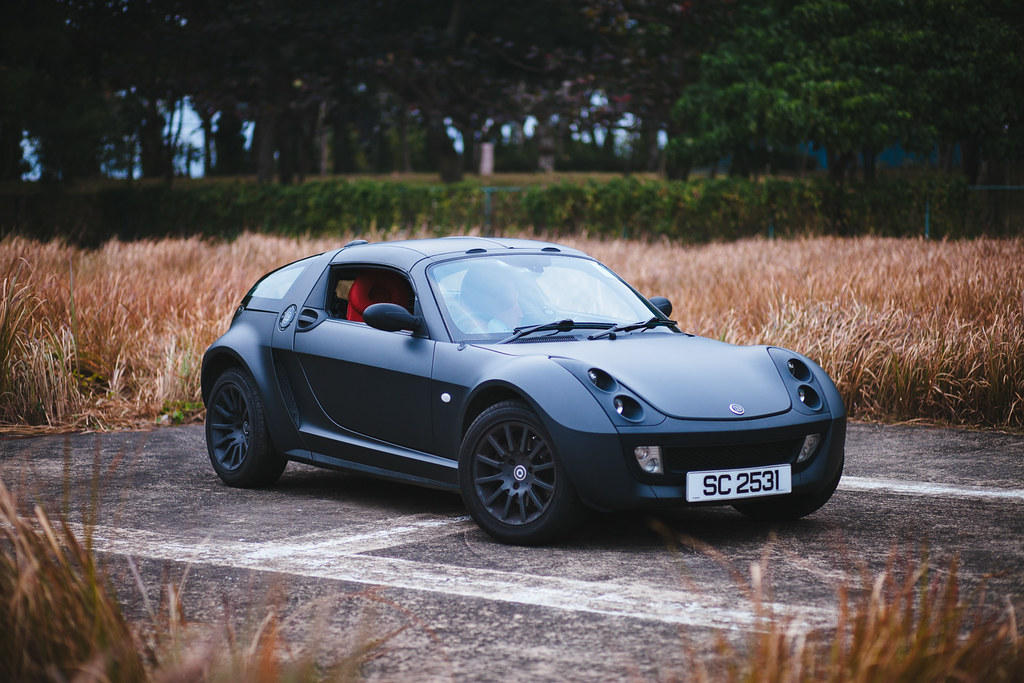
2. **Smart Roadster**When we talk about blunders, few cars present such a compelling case as the Smart Roadster. With sales of the innovative little Smart ForTwo city car failing to ignite excitement, panic set in at Smart headquarters. How could the brand generate buzz and entice more customers? Someone decided a lightweight sports car was the answer. What could go wrong with a Smart *sports* car, right?
The outcome was the two-seat Roadster, a visually arresting machine with plastic body panels and a 0.7-liter turbocharged three-cylinder engine, sending a modest 81 bhp to the rear wheels. This “fun” was further hindered by an excruciatingly sluggish automated manual gearbox. It boasted ‘F1-style’ sequential shifting, a claim that had about as much genuine F1 heritage as a can of Rich Energy drink has actual energy. The sequences were measured in calendar dates, not milliseconds.
Despite its eye-catching design and genuinely lively handling, the Roadster sold about as quickly as it could accelerate. If you think a 0–60 mph time of 10.6 seconds is underwhelming for a “Roadster,” spare a thought for the European entry-level model. That version made do with just 61 bhp, taking a truly glacial 15 seconds to reach 60 mph. Does taking that long to reach 60 mph even qualify as ‘moving’ in a sporting context? It promised open-top fun and delivered open-top exasperation.
Read more about: Beyond the Showroom: Unveiling 12 Luxury Models That Defy Depreciation and Dominate Resale Value for Discerning Drivers

3. **Ferrari 208 GTB**What could be more exciting, more visually striking, than a mid-engined, sharp-nosed Ferrari with a V8 growling just behind the seats? The answer, tragically for some, is one with more than 153 horsepower. Even Maranello has its moments of—shall we say—compromise. The 208 GTB is one such moment, a Prancing Horse that, through no fault of its designers or engineers’ initial intent, ended up being more of a prancing pony.
The villain in this story isn’t poor engineering but the cold, hard hand of bureaucracy. In 1980, Ferrari decided to outmaneuver Italy’s tax authorities, who had imposed double the duty on cars with engines exceeding 2,000cc. This was a direct hit to their larger-engined sports cars, and Ferrari, ever the pragmatist, found a way to sidestep it. The solution? Install a de-bored, 1,990cc eight-cylinder supercar engine.
This fiscal ingenuity, while perhaps brilliant, created a performance anomaly. The car topped out at just 133 mph, a figure that felt positively pedestrian for anything wearing the revered Cavallino Rampante badge. Mercifully, Maranello later introduced a turbocharger to the diminutive V8. This modification was a lifesaver for the model’s reputation, allowing it to hit 60 mph in a more respectable 6.6 seconds and pushing the top speed past 150 mph. It finally felt like a proper Ferrari.
Car Model Information: 2023 Toyota Camry LE
Name: Ferrari 308 GTB and GTS
Manufacturer: Ferrari
Production: 1975–1985
Assembly: Maranello
Designer: Leonardo Fioravanti (engineer)
Class: Sports car
BodyStyle: Berlinetta
Layout: Transverse engine,Rear mid-engine, rear-wheel-drive layout
Related: Ferrari GT4,Ferrari Mondial,Ferrari 288 GTO
Wheelbase: convert
Length: 4230 mm
Abbr: on
Width: 1720 mm
Height: 1120 mm
Predecessor: Dino 206 GT and 246 GT
Successor: Ferrari 328
Sp: uk
Caption: 1976 Ferrari 308 GTB
Categories: 1980s cars, All articles with dead external links, Articles with dead external links from August 2025, Articles with permanently dead external links, Articles with short description
Summary: The Ferrari 308 GTB berlinetta and targa-topped 308 GTS are V8 mid-engined, two-seater sports cars manufactured by the Italian company Ferrari from 1975 until 1985. The 308 replaced the Dino 246 GT and GTS in 1975 and was updated as the 328 GTB/GTS in 1985. The similar 208 GTB and GTS were equipped with a smaller, initially naturally aspirated and later turbocharged, two-litre engine, and were sold mainly in Italy.
Get more information about: Ferrari 308 GTB/GTS
Buying a high-performing used car >>>
Brand: Ferrari Model: 208 GTB
Price: $25,600 Mileage: 23,699 mi.
Read more about: 15 Undervalued 1970s Classic Cars That Are Smart Buys for Enthusiasts Today

4. **Porsche 914/4**The collaboration between Volkswagen and Porsche goes back further than many realize. Back in the swinging sixties, these two German titans were working together on a co-developed targa-roofed sports car. The original plan was simple: the entry-level four-cylinder version would carry a VW badge, while the more powerful flat-six variant would wear the Porsche emblem.
However, corporate pride got in the way. Porsche grew hesitant about marketing what was essentially a rebadged Volkswagen, clashing with their premium image. So, the final product was sold exclusively under the Stuttgart brand, meaning even the four-cylinder variant was now a “Porsche.” This decision made the base model Porsche 914/4 a bit of an identity crisis on wheels.
The base model for the U.S. market produced just 80 bhp. Eighty horsepower for a Porsche sports car! Despite being as lightweight as a roller skate, this meager power output meant that the 914/4 needed a sluggish 13.3 seconds to reach 62 mph. You could probably get out, walk around the car, and get back in before it hit highway speeds. While it handled well, what’s the point of razor-sharp reflexes if you’re always stuck in the slow lane?
Read more about: 10 Jaw-Dropping Celebrity Cars Seized for Unpaid Taxes (You Won’t Believe Who!)

5. **Chevrolet Corvette C3 ‘California’**America’s sports car, the legendary Corvette, has had its peaks and valleys. One of the lowest points in its history came in 1980, particularly for those in California. In what can only be described as an emissions-induced surrender, Chevrolet threw in the towel on trying to make its big-block V8s comply with stringent regulations. The company opted for a drastic, disheartening solution: drop in a smaller, severely restricted engine.
Sold (mercifully) for just the 1980 model year, the C3 ‘California’ was only available with a 305 cubic-inch V8, paired with an outdated three-speed automatic transmission. Let that sink in. America’s premier sports car, shackled by regulations and saddled with a gearbox that belonged in a bygone era. It was like handing a cowboy a squirt gun – all the looks, none of the firepower.
That’s right, despite boasting a sizable 5.0 liters of displacement, California’s version of the Corvette could only manage a measly 180 bhp. For a Corvette, that’s not just disappointing, it’s downright insulting. To make matters even more frustrating, all 1980 Corvettes came equipped with a speedometer that maxed out at 85 mph, thanks to a federal law. The Corvette C3 ‘California’ is a glaring example of how external pressures can choke the very essence out of a performance machine.
Car Model Information: 2023 Toyota Camry LE
Name: Chevrolet Corvette (C3)
Caption: 1973 Chevrolet Corvette Stingray
Manufacturer: Chevrolet
Aka: Chevrolet Corvette Stingray,(1968–76)
Production: August 1967 – October 1982
ModelYears: 1968–82
Platform: General Motors Z platform
Assembly: St. Louis Truck Assembly,Bowling Green Assembly Plant
Predecessor: Chevrolet Corvette (C2)
Successor: Chevrolet Corvette (C4)
Class: Sports car
BodyStyle: Convertible (car),coupé
Layout: Mid-engine design
Engine: {{cvt,305,cuin,L,1,Chevrolet small-block engine (first- and second-generation)#LG4,V8 engine
Transmission: manual transmission,manual transmission,Turbo-Hydramatic,Automatic transmission
Wheelbase: cvt
Length: {{cvt,182.1,in,mm,0
Width: {{cvt,69.2,in,mm,0
Height: {{cvt,47.8,in,mm,0
Weight: cvt
Designer: GM & Chevrolet design staff,Zora Arkus-Duntov,Bill Mitchell (designer)
Categories: 1970s cars, 1980s cars, All articles with unsourced statements, Articles with short description, Articles with unsourced statements from April 2024
Summary: The Chevrolet Corvette (C3) is the third generation of the Corvette sports car that was produced from 1967 until 1982 by Chevrolet for the 1968 to 1982 model years. Engines and chassis components were mostly carried over from the previous generation, but the body and interior were new. It set new sales records with 53,807 produced for the 1979 model year. The C3 was the second Corvette to carry the Stingray name, though only for the 1969–76 model years. This time it was a single word as opposed to Sting Ray as used for the 1963–67 C2 generation. The name was then retired until 2014 when it returned with the release of the C7.
The most expensive Corvette C3 to sell in history was a 1969 L88 Lightweight, one of only four lightweight L88s to be produced. It was sold by Barrett-Jackson in January 2014 for $2,860,000 (£1,728,941).
Get more information about: Chevrolet Corvette (C3)
Buying a high-performing used car >>>
Brand: Chevrolet Model: Corvette C3
Price: $25,600 Mileage: 23,699 mi.
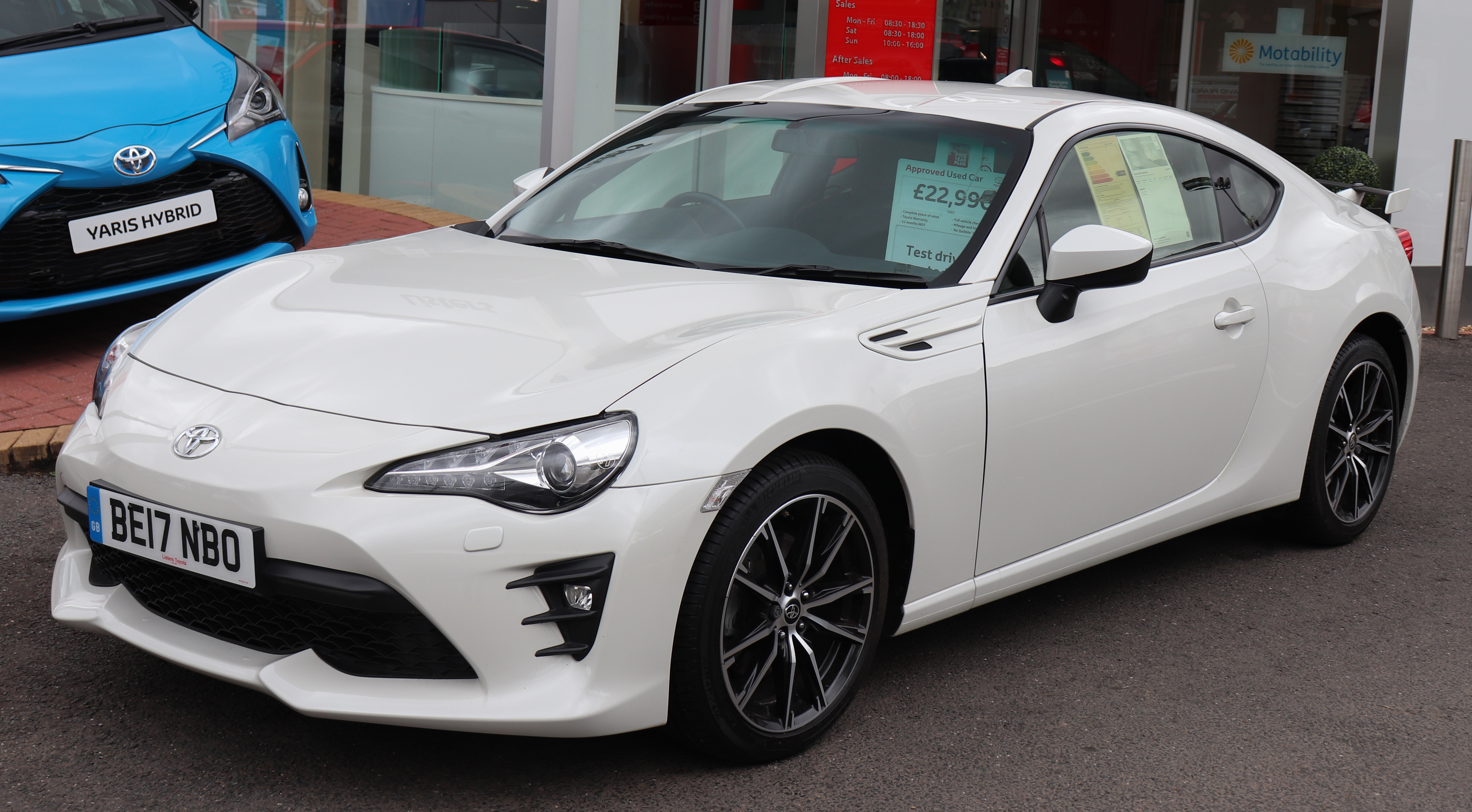
6. **Toyota GT86 / Subaru BRZ**Sometimes, the soul of a sports car isn’t measured purely in straight-line speed. Sometimes, it’s about the connection, the dance, the way it responds to your every command. The Toyota GT86 and its Subaru BRZ twin, affectionately known as the ‘Toyobaru’ models, are a perfect modern embodiment of this philosophy. They represent a deliberate departure from the horsepower wars, designed not for drag strips but for the pure joy of the twisty bits.
From the outset, the engineering choices behind these coupes were clear and intentional. Subaru insisted on using a flat-four engine, not just for its signature rumble, but primarily to maintain an incredibly low center of gravity, which is crucial for agile handling. Both manufacturers also made the conscious decision to deliberately avoid turbocharging, favoring a sharper, more immediate throttle response over a boost in raw power. It was about linearity and feel, rather than just numbers.
With a modest 197 bhp on tap, these coupes were never going to be rocket ships. In fact, the context acknowledges that they often struggled to keep up with a hot Renault Clio, which is saying something for a car with such aggressive looks. But that wasn’t the point. This isn’t a car designed to impress with dyno figures; it’s a car designed to engage the driver and make them feel every bit of its performance, without ever overwhelming it.
Ultimately, the Toyobaru twins stand as a powerful modern tribute to the classic philosophy that power isn’t everything. They prove that a finely tuned chassis, one that makes the absolute most of every single horsepower, will always be more rewarding, more engaging, and ultimately, more *sporty* than an overpowered machine that exists purely to chase arbitrary numbers on a spec sheet. It’s about driving pleasure, pure and simple.
Read more about: Forever Fun: MotorTrend Ranks the 10 Most Dependable Coupes Built to Last for Years to Come

7. **MG Midget**Let’s take a delightful stroll back to the swinging Sixties, a time of cultural revolution, iconic music, and the rise of some truly charming British sports cars. Among them was the MG Midget, an instantly recognizable classic that promised open-top motoring fun. However, when this little roadster first hit the scene in the summer of 1961, right around the same time The Beatles were starting their meteoric rise, its initial performance was, shall we say, more like a gentle strum than a rock anthem.
Underneath its undeniably cute bonnet, the early Midget had to make do with a tiny 1.0-liter engine, producing a rather humble 46 bhp. This was quickly identified as a significant issue, and within just a year, the engine was swapped out for a slightly larger 1.1-liter motor, pushing out a marginally more respectable 56 bhp. But even with this upgrade, early tests suggested the Midget could reach a top speed of around 88 mph, getting there required the patience of a primary school orchestra conductor. Hitting 60 mph took a truly painfully slow 18.3 seconds.
One might think that by 1967, with several years of development under its belt and the automotive world rapidly advancing, MG would have figured out a significantly better solution for its beloved Midget. Not quite. The later model, often seen in classic car rallies today, was actually saddled with a detuned Mini engine. This unit produced just 65 bhp, a figure intentionally weakened to ensure it wouldn’t steal the spotlight from the more expensive and more powerful MGB.
It’s a fascinating, if frustrating, glimpse into the quirks and compromises of the British car industry at its finest. The MG Midget, despite its undeniable charm and iconic status, stands as a testament to how even beloved sports cars can suffer from corporate decisions that prioritize market positioning over sheer performance. It truly embodied the phrase ‘slow and steady wins the race’—eventually.
Read more about: 12 Automotive Disasters: The Most Infamous Cars
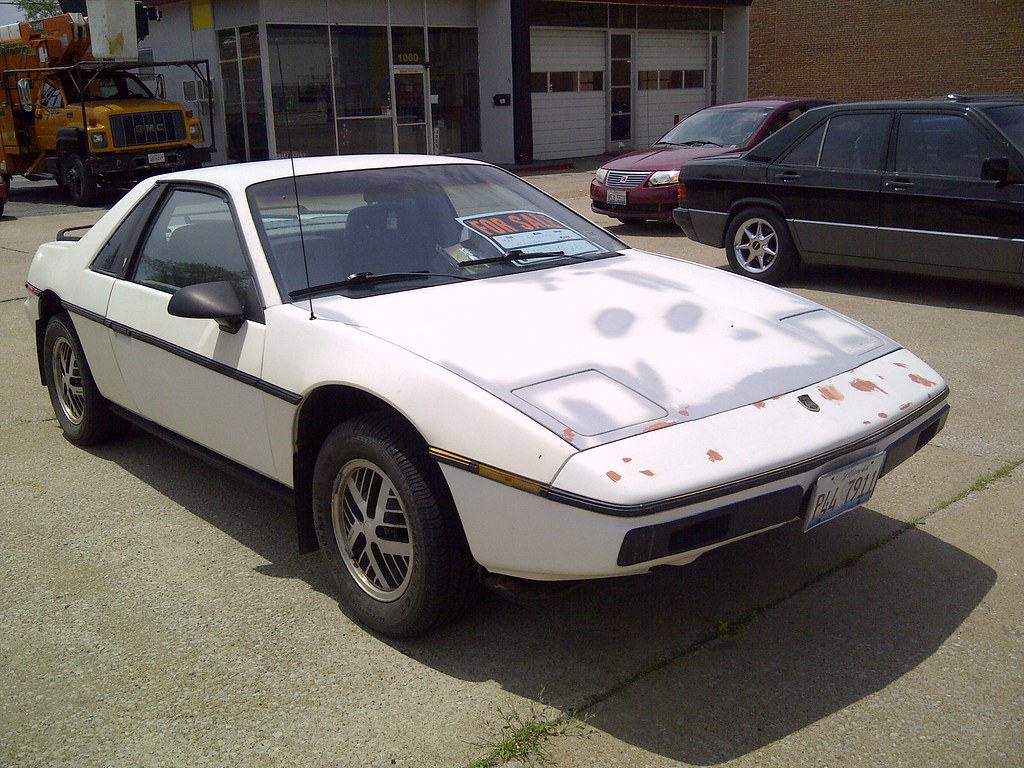
8. **Pontiac Fiero**America’s first mid-engine sports car, the Pontiac Fiero, is a vehicle that has undeniably earned its notoriety. It’s a car that has gained recognition for just about every reason imaginable, and few of them positive. We’re talking unreliability, sluggish performance, surprisingly poor build quality, an alarming tendency to spontaneously catch fire, and perhaps its most enduring legacy: an unfortunate afterlife as the base for thousands of unconvincing Ferrari replicas. Honestly, what a disaster from nearly every conceivable angle.
Yet, beneath all the well-deserved criticism and design flaws, there was a genuinely solid concept behind the Fiero. Pontiac envisioned it as a smaller, more affordable, and crucially, more fuel-efficient alternative to the mighty Corvette. It was aimed directly at gearheads who were starting to feel the pinch of rising fuel prices in the early 1980s, offering a sporty look and mid-engine layout without the associated high costs and thirst for premium gasoline.
However, the execution of this promising concept left much to be desired, particularly in the performance department for the earlier models. It wasn’t until 1985 that the Fiero finally received a V6 engine capable of delivering a respectable amount of power. Before that, the base models suffered through truly disappointing performance figures, including a 10.7-second 0–60 mph time and a 17-second quarter-mile sprint, all courtesy of a 2.5-liter four-cylinder engine producing 190 bhp.
And then there were the fires. That same engine had an infamous and truly unfortunate habit of throwing a rod through the block, which would then leak oil onto the hot exhaust system, promptly causing the car to set itself on fire. It was a serious safety issue that plagued early models and forever cemented the Fiero’s fiery reputation. And that, kids, is why choosing a name that’s an anagram of “o fire” is just a terrible, terrible idea.
Car Model Information: 1986 Pontiac Fiero
Name: Pontiac Fiero
Caption: 1988 Fiero Formula
Manufacturer: Pontiac (automobile)
Production: August 1983 – August 16, 1988,370,168 produced
ModelYears: 1984 – 1988
Successor: Pontiac Solstice
Assembly: Pontiac, Michigan
Designer: Hulki Aldikacti,George Milidrag
Class: Sports car
BodyStyle: fastback,notchback
Platform: GM P platform
Layout: Rear mid-engine, rear-wheel-drive layout
Engine: {{cvt,151,CID,L,1,disp=flip,Iron Duke engine#LR8,Inline-four engine
Transmission: Turbo-Hydramatic 125,Manual transmission,Getrag 282 transmission,Isuzu
Wheelbase: 2373 mm
Abbr: on
Length: 4072 mm
Width: 1750 mm
Height: 1191 mm
Weight: 1116 to
Categories: All articles with unsourced statements, Articles with short description, Articles with unsourced statements from February 2012, Articles with unsourced statements from July 2024, Articles with unsourced statements from October 2025
Summary: The Pontiac Fiero is a rear mid-engine, light sports car manufactured and marketed by Pontiac for model years 1984 – 1988. Intended as an economical commuter car with modest performance aspirations, it was Pontiac’s first two-seater since their 1926 to 1938 coupes, and the first mass-produced, rear mid-engine car by any American manufacturer.
In addition to using 4- and 6-cylinder engines to help Pontiac meet America’s ‘CAFE’ average fuel economy requirements, the Fiero’s chassis and structure technology used non-load-bearing, composite body-panels, contributing to the car’s light-weight and its unique selling proposition. Pontiac engineers modified the design over its life to enhance its performance and reposition the two-seater closer to the implications of its sporty configuration.
The Fiero 2M4 (two-seat, mid-engine, four-cylinder) placed on Car and Driver magazine’s Ten Best list for 1984, and was the Official Pace Car of the Indianapolis 500 for 1984.
A total of 370,168 Fieros were manufactured over five years’ production, its mild performance, reliability and safety issues becoming points of criticism. The Fiero was discontinued after annual sales fell steadily.
Get more information about: Pontiac Fiero
Buying a high-performing used car >>>
Brand: Pontiac Model: Fiero
Price: $14,999 Mileage: 68,582 mi.
Read more about: 10 Iconic American Cars That Are Simply Too Dangerous for Today’s Roads
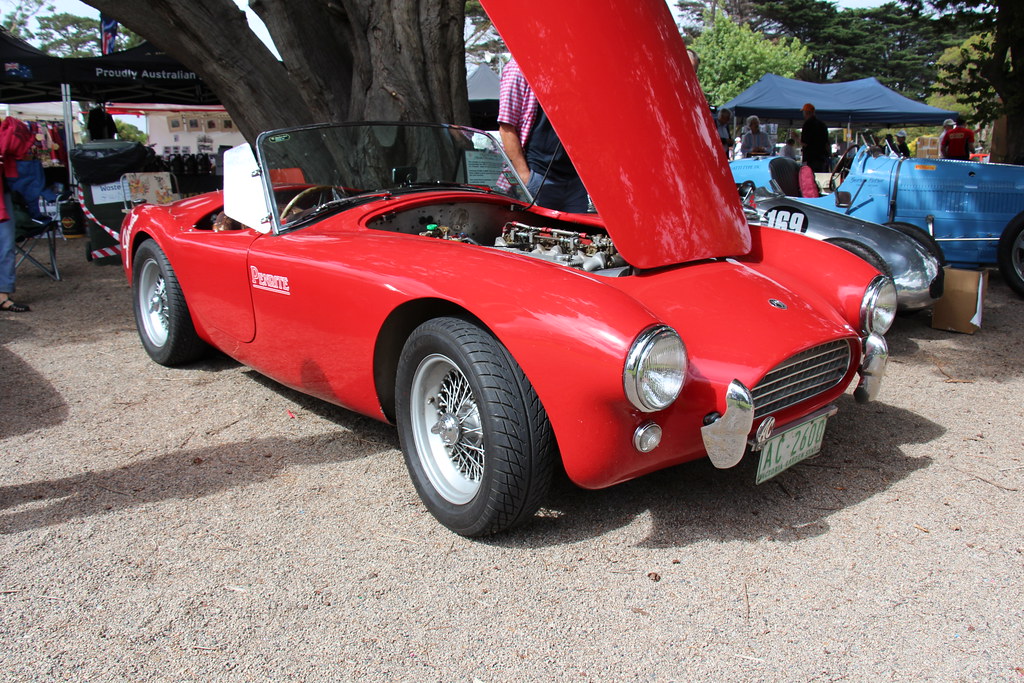
9. **AC Ace**Few cars have a story as dramatic, as transformative, or as iconic as the AC Ace. This is the unassuming British roadster that eventually gave glorious rise to the legendary AC Cobra, a machine synonymous with raw, unbridled American muscle. But before Carroll Shelby got his hands on it and unleashed pure automotive fury, the Ace started life with a far more humble and, frankly, rather sedate temperament. It was a sports car with a quiet charm, a stark contrast to the thunder it would later become.
In its original incarnation, the AC Ace was powered by a rather modest 100 bhp four-cylinder engine. What’s even more remarkable is that this powerplant could trace its origins all the way back to the 1920s, highlighting the traditional, almost vintage, approach to its initial engineering. By the standards of the early 1950s, when the Ace first debuted, its 0–60 mph time of 11.4 seconds was nothing to be ashamed of. It was perfectly adequate for the era, a respectable performer that offered an enjoyable driving experience without any pretense of blistering speed.
However, the automotive world moves at a relentless pace, and what was respectable in the early 50s quickly became pedestrian. The pivotal moment arrived when an American racing legend, Carroll Shelby, entered the scene. Fast forward to 1964, and Shelby wasn’t just modifying; he was happily shoehorning gargantuan 7.0-liter Ford V8s into the Ace’s lightweight chassis, pumping out a monstrous 425 bhp. It was an audacious, almost reckless, act of automotive alchemy.
This incredible feat of engineering transformed the relatively mild-mannered AC Ace into the world’s fastest sports car, the AC Cobra, capable of hitting a top speed exceeding 180 mph. The Ace’s humble beginnings before Cobra glory serve as an extraordinary reminder of how a solid, lightweight platform, when paired with the right amount of brute force and visionary ambition, can ascend from respectable to legendary, leaving its original, slower self as a distant, almost forgotten, memory.
Car Model Information: 1956 AC Ace
Name: AC Ace
Caption: 1953–1963 AC Ace
Manufacturer: AC Cars
Production: 1953–1963
BodyStyle: Roadster (automobile)
Engine: Straight-6 engine
Wheelbase: cvt
Weight: cvt
Length: cvt
Width: cvt
Height: cvt
Transmission: manual transmission
Related: AC Aceca,AC Greyhound,AC Cobra
Successor: AC Cobra
Designer: John Tojeiro
Categories: 1950s cars, 1960s cars, 24 Hours of Le Mans race cars, AC vehicles, All Wikipedia articles written in British English
Summary: The AC Ace is a sports car produced by AC Cars of Thames Ditton, England, from 1953 until 1963. There were three main versions: the original AC Ace, the Ace Bristol, and the Ace 2.6, differentiated by the type of engine installed. About 220 AC Aces and 466 Ace-Bristol cars were produced during its 10 year run. The AC Ace was the base car from which the original AC Cobra was developed.
Get more information about: AC Ace
Buying a high-performing used car >>>
Brand: AC Model: Ace
Price: $295,000 Mileage: 0 mi.
Read more about: Navigating the Tire Market: 15 Essential Tips to Secure the Best Price and Maximize Value for Your Next Set of Tires
10. **Matra Bagheera**When we talk about innovative and interesting automotive design, the French company Matra frequently comes to mind. For decades, this firm has been at the forefront of delivering cutting-edge solutions and pioneering new technologies, often working in collaboration with some of the biggest names in the industry. So, when Matra teamed up with Simca in the early 1970s, the automotive world anticipated something genuinely unique. And they delivered with the Matra Bagheera, a cool-looking three-seater sports car introduced in 1973.
Now, you definitely read that right: the Bagheera truly had three seats, and all of them were positioned up front. This wasn’t just a quirky design choice; it was a defining feature that made the car incredibly distinctive. Despite its compact and small dimensions, this clever layout meant that three people could sit comfortably next to each other, a rare and appealing proposition for a sports car. It offered a level of practicality and social interaction that few of its contemporaries could match.
However, in the context of performance blunders, the Bagheera certainly had its Achilles’ heel. While its design was avant-garde and its seating unique, the power came from a diminutive 1.2 or 1.4-liter engine. This powerplant, while efficient, simply didn’t provide the kind of exhilarating, pulse-pounding performance one might typically expect from a vehicle with such a sporty aesthetic. It looked fast, but wasn’t necessarily built for speed.
Nevertheless, the little Matra Bagheera found a moderate measure of success, particularly in the European market. This success wasn’t driven by blistering acceleration or high top speeds, but rather by its undeniable French charm, its distinctive and practical three-seat layout, and its innovative spirit. It’s a reminder that sometimes, a sports car can win hearts not by dominating the race track, but by simply offering something delightfully different, even if it meant being a bit on the slower side.
Read more about: The Disappointing Cars We Can’t Forget
So, there you have it. A sobering, yet strangely endearing, tour through the annals of automotive history, revealing that not every car that looks the part *is* the part. While we often celebrate the speed demons and record-breakers, there’s a unique appreciation to be found in these charmingly slow, occasionally problematic, but always interesting machines. These performance blunders remind us that the heart of a true sports car isn’t just about outright velocity. It’s about the story it tells, the lessons it teaches, and the unexpected joy (or frustration) it brings to the open road. And sometimes, that’s just as thrilling as a blistering 0-60 sprint, isn’t it?

